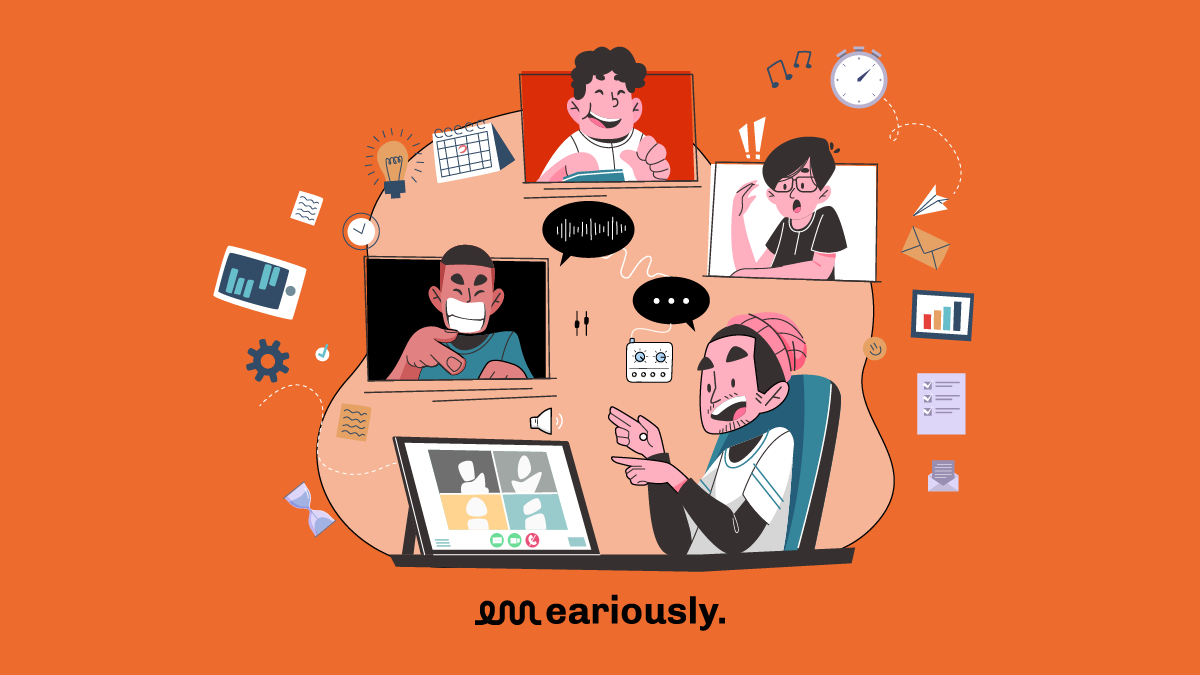We often think of text-to-speech technology as a way to make life easier, whether it’s having our emails read aloud or using a screen reader to access information. But text-to-speech can also be a powerful tool for creativity, as it can be used to create new forms of art and expression. In this blog post, we’ll explore the potential of text-to-speech technology as a creative tool, and how it can be used to create unique experiences and artwork.
How Does Text-to Speech Work?
Text-to-speech (TTS) technology is a method of converting written text into spoken words. TTS technology works by analyzing the text and then using a computer-generated voice to read it aloud. The process begins by breaking down the text into individual words, then into phonemes, which are the smallest units of sound in a word.
These phonemes are then matched with pre-recorded sound files, known as “speech units” or “diphones” to create the speech output. TTS technology can be used for a variety of applications, such as screen readers for visually impaired individuals, voice assistants, and automated customer service systems. The quality of TTS technology has greatly improved in recent years, with many TTS systems now able to produce human-like speech.
The Creative Potential of Text-to-Speech Technology

With the right tools and a little creativity, the possibilities are endless with text-to-speech technology. let’s dive in and take a look at them.
Text-to-Speech in Creative Fields Such as Music and Podcasting
Text-to-speech technology has a wide range of potential use cases in creative fields. One of the most popular uses of TTS in music is as a tool for creating vocal samples. Musicians can use TTS to input lyrics or other text, which are then transformed into spoken vocals that can be used in songs and tracks. TTS can also be used to generate unique, otherworldly vocal sounds, adding an extra layer of creativity to music production.
Another use case for TTS in creative fields is podcasting. TTS can be used to create automated voice-over narration, allowing podcasters to easily include information or context in their episodes without having to record it themselves. TTS can be used to create automated transcripts of podcast episodes, making them more accessible to a wider audience.
In the field of video game development, TTS technology can be used to create realistic and engaging non-playable characters (NPCs) and in-game dialogues. TTS can help to create NPCs that can interact with players more naturally and realistically, making the game more immersive and engaging. TTS can also be used to create spoken tutorials and in-game instructions, making it easier for players to understand and navigate the game.
TTS technology has also been used in art installations, interactive storytelling, and other creative projects. The creative potential of TTS technology is vast, and it is constantly evolving, offering new opportunities for creators in a wide range of fields.
Text-to-Speech in Interactive and Immersive Storytelling
Text-to-speech technology has the potential to revolutionize interactive and immersive storytelling. One of the most significant ways in which TTS can be used in this context is through the creation of non-linear and branching narratives. With TTS, storytellers can create narratives that change and adapt based on the actions and choices of the audience. This allows for a more personalized and dynamic storytelling experience, where the audience can actively shape and influence the story.
TTS technology can also be used to create more immersive and realistic environments in virtual reality and augmented reality experiences. With TTS, virtual characters can be given natural-sounding voices, making them feel more lifelike and believable. TTS can be used to create spoken descriptions and information about the virtual environment, allowing audiences to fully immerse themselves in the story.
Another use of TTS technology in storytelling is in the creation of automated scripts and dialogue. This can be useful for writers, who can use TTS to hear how their dialogue sounds and make changes accordingly. This can also be useful for voice actors, who can use TTS as a tool to help them prepare for their roles.
TTS technology has the potential to take interactive and immersive storytelling to new heights, by allowing for more personalized, dynamic, and immersive experiences. Technology can also make the process of creating and polishing scripts and dialogue more efficient and effective.
Text-to-Speech in the Field of Art and Design
Text-to-speech technology has the potential to be used in a wide range of applications in the field of art and design. One of the most obvious ways that TTS can be used in this context is through the creation of spoken word art. This could involve the use of TTS to generate spoken versions of written poetry or to create spoken word performances that incorporate elements of music and sound design.
Another way that TTS can be used in art and design is through the creation of interactive installations. For example, TTS could be used to create a sculpture that speaks or an installation that generates spoken responses based on the actions of the audience. TTS technology can also be used to create immersive and interactive experiences that respond to the audience’s presence and movements.
TTS technology can be used to create more accessible and inclusive art. For example, TTS can be used to provide audio descriptions of visual artworks, making them more accessible to people with visual impairments. TTS can also be used to create more inclusive and accessible exhibitions, by providing spoken information and descriptions of the artworks on display.
TTS technology opens up a wide range of possibilities for art and design, from spoken word performances to interactive installations, from accessibility to more immersive and interactive experiences. TTS can be a great tool to create more engaging and inclusive art experiences.
Text-to-Speech in Accessible Media for People with Disabilities
Text-to-speech technology can be used to create more inclusive and accessible media for people with disabilities in various ways. One of the most significant ways in which TTS can be used in this context is through the creation of screen readers for visually impaired individuals.
These software programs use TTS technology to read text aloud, allowing people with visual impairments to access and understand written content on computers and mobile devices. This can include anything from websites, emails, documents, and books.
Another way that TTS can be used to create more inclusive and accessible media is through the creation of audio descriptions for visual media, such as movies, television shows, and video games. Audio descriptions are narration track that describes the visual elements of a program, such as the actions, costumes, and scenery, and these can be added to the audio track of a movie, television show, or video game. This allows people who are blind or have low vision to fully experience and understand the visuals of the program.
TTS technology can also be used to create more accessible and inclusive educational materials. For example, TTS can be used to create spoken versions of textbooks, making them more accessible to people with reading difficulties or learning disabilities. TTS can also be used to create spoken versions of educational videos, allowing people who are deaf or hard of hearing to fully understand and engage with the content.
TS technology can be used to create more inclusive and accessible media for people with disabilities in various ways, from screen readers for visually impaired individuals, to audio descriptions for visual media and accessible educational materials. TTS can greatly enhance the accessibility of written, visual and audio-based content and allow people with disabilities to fully engage with it.
The Ethical and Privacy Considerations of Using Text-to-Speech Technology in Creative Projects
The use of text-to-speech technology in creative projects raises several ethical and privacy considerations. One major ethical consideration is the use of TTS technology to impersonate or mimic real people’s voices. This can be seen as unethical or disrespectful, particularly if the person whose voice is being impersonated has not given their consent.
The use of TTS technology to impersonate real people’s voices can also raise legal issues, such as copyright infringement or violation of the right to publicity.
Another ethical consideration is the use of TTS technology to create content that is offensive, discriminatory, or harmful. For example, the use of TTS to generate speech that is racist, sexist, or offensive to certain groups of people can be seen as unethical. It is important to consider the potential impact of the content being created before using TTS technology.
Privacy is another important consideration when using TTS technology. TTS systems require access to large amounts of data to function, and this data can include personal information such as names, addresses, and other identifying information. It is important to take steps to protect this data, such as using encryption and ensuring that data is only used for the intended purpose.
Using text-to-speech technology in creative projects raises several ethical and privacy considerations. It is important for creators to consider the potential impact of the content being created, to seek consent when appropriate, and to protect personal data and information.
Conclusion
Text-to-speech technology has come a long way in recent years, and it shows great promise for helping people with communication disorders. The technology is also being used in creative ways, such as creating “talking” artwork and generating new kinds of poetry. As text-to-speech technology continues to evolve, it will likely open up even more possibilities for creativity and self-expression.
If you’re curious to learn more about text-to-speech, read more blogs by us here!





